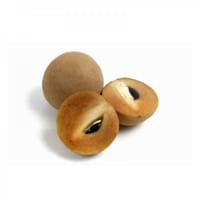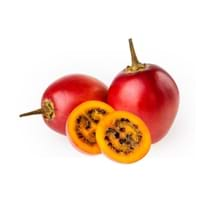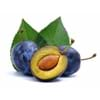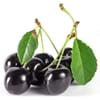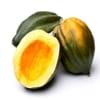Health Benefits
Anti-inflammatory properties, Arthritis treatment, Regulates Blood Sugar, Unknown
Cancer prevention, Improves eye vision, Prevents diabetes, Prevents high blood pressure
General Benefits
Boosts immune system, Controls blood sugar levels, Digestive aid
Cures inflamed tonsils, Helps in weight loss, Maintains healthy cholesterol level
Skin Benefits
Nourishes skin, Protects skin from oxidative stress
Anti-aging benefits, Protects skin from oxidative stress
Hair Benefits
Prevents hair loss, Promotes longer and healthier hair, Regulates hair growth
Protects hair
Allergy Symptoms
Asthma, Red rash, Swelling of mouth, tongue or lips
Anaphylaxis, Coughing, Diarrhea, Eczema, Hives, Itching sensation in throat, Nausea, Skin Rashes, Runny nose, Sneezing, Swelling of mouth, tongue or lips, Vomiting, Wheezing
Side Effects
Diarrhoea, Vomiting
Heart burn
Best Time to Eat
As a snack in the late afternoon
Along with meal, As a snack in the late afternoon, Don't consume at night and before bed, Don't eat after meal, Morning time (before lunch)
Vitamin B5 (Pantothenic Acid)
Vitamin C (Ascorbic Acid)
Vitamin E (Tocopherole)
Not Available
Vitamin K (Phyllochinone)
Not Available
Lutein+Zeaxanthin
Not Available
Phytosterol
Not Available
Calories in Fresh Fruit with Peel
Not Available
Calories in Fresh Fruit without Peel
Not Available
Calories in Frozen Form
Not Available
Calories in Juice
Not Available
Calories in Jam
Not Available
Calories in Pie
Not Available
Type
Berry
Fruit vegetable
Season
Winter
All seasons
Varieties
Bush Table Queen, Heirloom Table Queen, Festival Hybrid, Early Acorn Hybrid, Table Ace, Ebony and Cream of the Crop
Tamarillo bold gold, Tamarillo red beau, Tamarillo tango and Tamarillo teds red
Seedless Variety
Not Available
No
Color
Dark green, Green-yellow, Orange green
Orange, Red, Yellow
Inside Color
Not Available
Creamy Yellow
Taste
Sweetish
Tangy, Tart
Origin
Central America, North America, Unknown
South Africa
Soil Type
Well-drained
Sandy loam, Well-drained
Climatic Conditions
Cold, Sunny
Rainfall, Warm
Facts about
- It was named as Acorn Squash for its resemblance to a large ribbed acorn.
- It is said that squash was being grown in Mexico as long as 10,000 years ago.
- It was the first food cultivated by native American Indians.
- Up until 1967, tamarillos were referred to as tree tomatoes.
- The name tamarillo is derived from Maori word 'tama' which means leadership and rillo from spanish word 'amarillo' which means yellow.
Cocktails
Not Available
Yes
Top Producer
China
New Zealand
Other Countries
Egypt, India, Iran, Italy, Mexico, Russia, Turkey, Ukraine, United States of America
Australia, Chile, Colombia, Malaysia, Peru, Philippines
Top Importer
UAE
United States of America
Top Exporter
India
New Zealand
Botanical Name
Cucurbita Pepo
Solanum betaceum
Synonym
Winter Squash
tree tomato, genus Cyphomandra, Cyphomandra
Subkingdom
Tracheobionta
Tracheobionta
Division
Magnoliophyta
Magnoliophyta
Class
Magnoliopsida
Magnoliopsida
Subclass
Dillenhidae
Asteridae
Order
Cucurbitales
Solanales
Family
Cucurbitaceae
Solanaceae
Species
Pepo
Solanum betaceum
Generic Group
Not Available
Nightshade
Difference Between Sapota and Tamarillo
We might think that Sapota and Tamarillo are similar with respect to nutritional value and health benefits. But the nutrient content of both fruits is different. Sapota and Tamarillo Facts such as their taste, shape, color, and size are also distinct. The difference between Sapota and Tamarillo is explained here.
The amount of calories in 100 gm of fresh Sapota and Tamarillo with peel is 40.00 kcal and Not Available and the amount of calories without peel is Not Available and 31.00 kcal respectively. Thus, Sapota and Tamarillo belong to Low Calorie Fruits and Low Calorie Fruits category.These fruits might or might not differ with respect to their scientific classification. The order of Sapota and Tamarillo is Cucurbitales and Solanales respectively. Sapota belongs to Cucurbitaceae family and Tamarillo belongs to Solanaceae family. Sapota belongs to Cucurbita genus of Pepo species and Tamarillo belongs to Solanum genus of Solanum betaceum species. Beings plants, both fruits belong to Plantae Kingdom.
